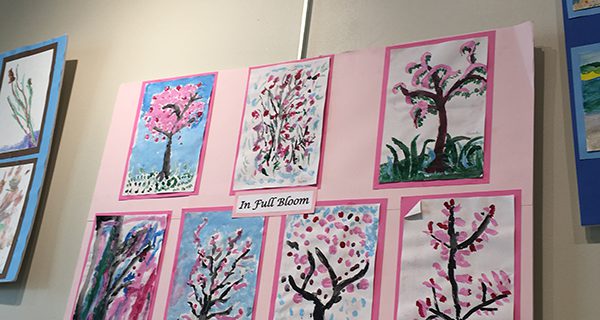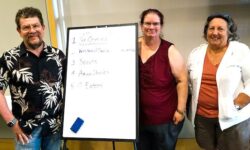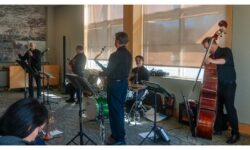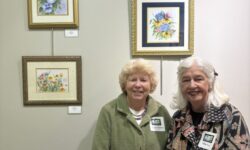By Katrina Margolis
Hometown Weekly Reporter
The Westwood Library, while already a lovely space, always augments its value through wonderful exhibits in the main hall. From April 4 to April 30, the exhibit on display was “Bridging Memories Through Art,” featuring 50 works of art as well as an explanation of the benefits of art therapy. These works were created by residents at Bridges, a community created exclusively for those with Alzheimer’s disease and related dementia. The work was done through a process called Mneme Therapy, which was developed by the Art Without Boundaries Association. It is a combination of the creative arts, which engages the whole brain and stimulates its natural ability to rebuild lost or underdeveloped functions. Singing, movement, directed painting, storytelling, and one-on-one sessions are all involved.

Painting can help with cognitive function, motor skills, as well as calm aggressive or anxious behavior.
The goal of the course is for participants to be supportive of each other’s efforts, as well as inspired to gain confidence in their artistic abilities.
Another class was the Canvas Paint Lessons, provided by Julie Quill from Sing, Explore, Create. In this course, clients can engage with others in a creative environment while also working to improve their social, emotional, cognitive, and motor skills through music therapy and expressive therapy services. Still-life paintings were also on display. The residents have total control over the subject of the painting, the colors they use, and what styles they will employ. Residents were guided through the process and given step-by-step cues throughout in order to help the process of still-life painting.
These types of programs can inspire a resident with limited speech to use a paint brush to communicate, and also lessen aggressive or anxious behavior.






















